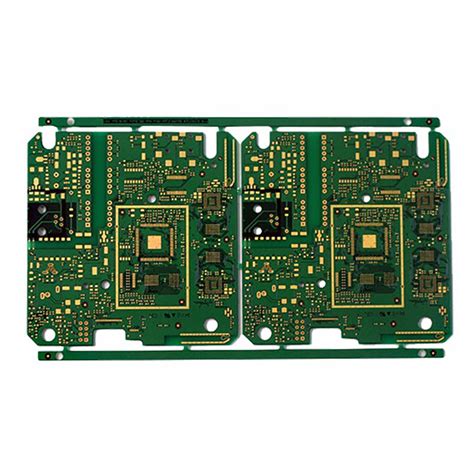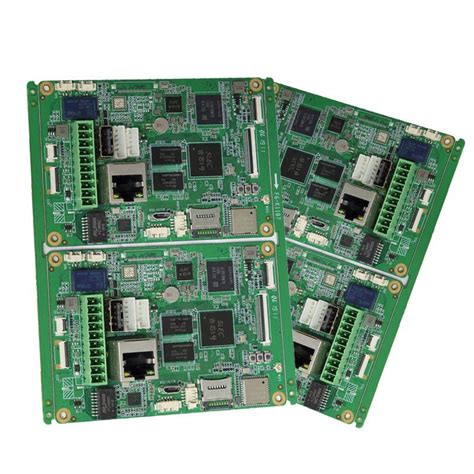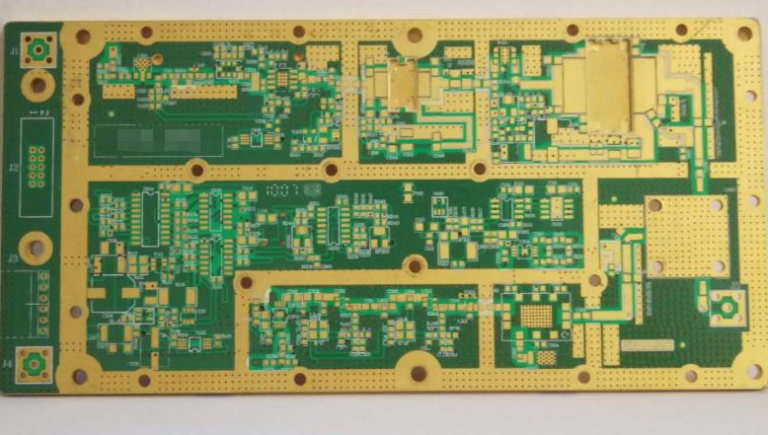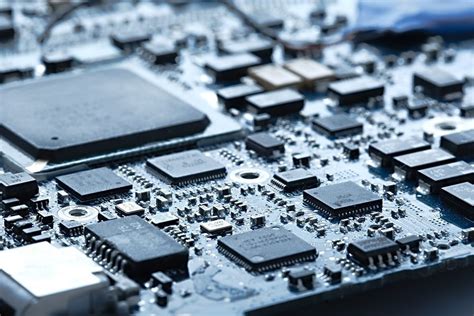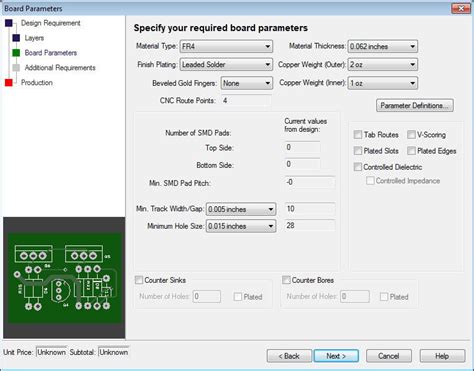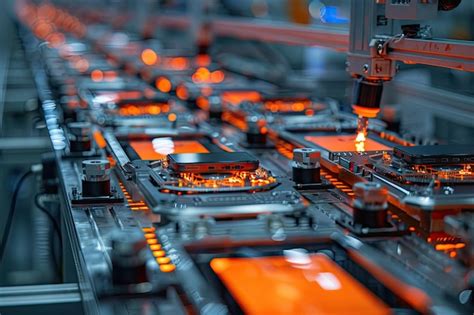Top Circuit Card Assembly Manufacturers Driving Innovation
Key Takeaways
In navigating the ever-evolving landscape of electronics, it’s crucial to acknowledge the significant role of circuit card assembly manufacturers in driving progress. These companies specialize in pcb assembly and pcba processes, offering innovative solutions that enhance both productivity and quality in electronics production. One of the primary elements that sets these leaders apart is their investment in advanced technologies, which streamline operations and ensure precision. By employing state-of-the-art equipment, they improve manufacturing efficiency, reduce waste, and deliver high-quality products that meet rigorous industry standards.
Moreover, these manufacturers are constantly adapting to changing market demands and integrating sustainable practices, which not only benefit their businesses but also contribute positively to the environment. Through collaboration and a focus on research and development, leading circuit card assembly manufacturers are pushing boundaries, fostering a culture of innovation that ultimately shapes the future of PCB design and functionality. As the electronics industry continues to expand, the emphasis on high-quality pcb assembly services will remain vital for developing next-generation technology solutions.
Introduction to Circuit Card Assembly: A Pillar of Electronics Innovation
Circuit Card Assembly (CCA) plays a crucial role in the electronics industry by providing the foundational structure for electronic components. The process of pcb assembly involves several intricate steps, including the mounting of various components onto a printed circuit board (PCB), which is essential for creating functional electronic devices. Manufacturers specializing in pcba utilize a combination of advanced technologies and efficient production techniques to deliver high-quality products that meet the ever-evolving demands of the market.
As innovation drives the need for more sophisticated electronics, pcb assembly has adapted to harness emerging technologies. These innovations not only enhance product performance but also streamline production processes, thereby increasing overall efficiency. For instance, automated assembly lines and precision soldering techniques have transformed how circuit cards are assembled, minimizing human error and maximizing productivity.
Moreover, key players in this sector are committed to continually improving their pcba processes while maintaining strict adherence to industry standards. This commitment ensures that their products are not only innovative but also reliable and safe for end users.
“Innovation in circuit card assembly paves the way for future advancements in electronics.”
Through their dedication and expertise, circuit card assembly manufacturers are not just building components; they are actively participating in shaping the future landscape of technology itself. In an industry that thrives on rapid changes, these manufacturers stand as pillars supporting ongoing innovations critical to global progress in electronics.
Key Players in Circuit Card Assembly Manufacturing
The landscape of pcb assembly is increasingly shaped by several key players who are redefining excellence in the pcba industry. These manufacturers employ a blend of innovative processes and advanced technologies that enhance the quality and efficiency of their production lines. Companies like Flextronics, Jabil, and Benchmark Electronics have established themselves as leaders by investing heavily in automated assembly systems, which offer precision and scalability. Lean manufacturing principles are also widely adopted, ensuring minimal waste and maximizing productivity. Furthermore, collaborations with technology firms have led to breakthroughs in circuit card assembly capabilities, enabling faster turnaround times and improved product performance. As these players adapt to evolving market demands, their commitment to quality assurance and adherence to international standards underscores their pivotal role in advancing the circuitry required for modern electronics. This dynamic environment not only accelerates innovation but also reinforces the importance of robust supply chains that align with the highest industry benchmarks.
Advanced Technologies Shaping Circuit Card Assembly
In the ever-evolving landscape of circuit card assembly, advanced technologies are pivotal to enhancing the efficiencies and capabilities of pcb assembly processes. Innovations such as automated pcba equipment play a crucial role in minimizing human error and increasing production speed. Techniques such as pick-and-place machines enable precise component placement, vital for complex designs that characterize modern electronics. Additionally, the integration of artificial intelligence in quality inspection processes has dramatically improved defect detection rates, ensuring that both functionality and reliability are met in today’s demanding applications. Sophisticated software solutions have also emerged, streamlining design for manufacturability, thus reducing time to market. Furthermore, advancements in materials science have introduced new substrates that offer better performance and durability, responding to the industry’s need for more robust electronic devices. Collectively, these technologies not only propel circuit card assembly into a new era but also solidify its foundation within the broader context of the electronics industry.
Production Techniques that Enhance Efficiency and Quality
In the realm of pcb assembly, manufacturing efficiency and quality are paramount for success. Leading circuit card assembly manufacturers leverage a variety of sophisticated production techniques to meet the increasing demands of the electronics industry. One such technique is the implementation of automated assembly processes, which reduce manual errors and increase throughput. By utilizing advanced robotics, manufacturers can achieve higher precision in placing components on a pcba (printed circuit board assembly), ensuring that each connection meets stringent quality standards.
Moreover, the integration of smart technology in manufacturing lines allows for real-time monitoring. This approach not only enhances process efficiency but also aids in identifying any anomalies during production, thereby minimizing waste and rework. Manufacturers are also adopting lean manufacturing principles, which focus on eliminating unnecessary processes while maximizing value added through careful planning and streamlined operations.
Additionally, advancements in surface mount technology (SMT) have transformed how products are assembled, offering significant improvements in both size reduction and packing density, crucial for modern electronic devices. By employing sophisticated soldering techniques, specifically reflow soldering, manufacturers ensure robust connections that withstand stress throughout a product’s life cycle.
These innovative production techniques not only enhance efficiency but also raise the bar for quality assurance in pcb assembly processes, positioning manufacturers at the forefront of industry advancements. The collaboration of cutting-edge technology and meticulous craftsmanship enables them to produce high-quality assemblies that cater to an ever-evolving market landscape.
Contribution of Circuit Card Assembly Manufacturers to Industry Standards
The contribution of circuit card assembly manufacturers to industry standards is a cornerstone in the progression of electronics technology. These organizations not only adhere to existing regulations but also play a pivotal role in shaping pcb assembly standards through innovation and collaboration. By adopting leading-edge practices and employing advanced methodologies, they help set benchmarks that ensure quality, safety, and reliability across the electronics landscape.
Through extensive research and development, these manufacturers contribute valuable insights into best practices for pcba processes, enabling improvements in sustainability, efficiency, and overall product performance. The synergy between manufacturers often leads to partnerships that drive new initiatives—such as improved traceability methods in the pcb assembly process—and foster compliance with international standards. Such initiatives ultimately benefit the entire industry by promoting higher quality control, enhancing consumer trust, and ensuring a competitive edge in a rapidly evolving marketplace.
In summary, the proactive engagement of circuit card assembly manufacturers in setting and maintaining industry standards not only bolsters their own operations but also propels the broader electronics sector towards innovation and excellence.
Case Studies: Innovators in Circuit Card Assembly
In the realm of pcb assembly and pcba, numerous manufacturers have emerged as leaders in driving technological advancements. One such pioneer is a company that has embraced automation to streamline its circuit card assembly processes. Through the implementation of robotics and AI-driven inspection systems, this manufacturer has significantly improved production speed while minimizing defects. Another notable innovator focuses on sustainable practices by utilizing eco-friendly materials in its pcb assembly line, adhering to both environmental standards and customer demand for green technology. Moreover, a manufacturer renowned for its precision engineering has revolutionized the industry by developing custom solutions that cater to a wide array of sectors, from automotive to consumer electronics. These case studies highlight not only the diversity among pcba manufacturers but also their collective commitment to elevating industry standards through innovation and adaptability. This dynamic landscape underscores the critical role of circuit card assembly in meeting the evolving needs of global electronics markets, showcasing how innovation within their processes plays a pivotal part in shaping the future of technology.
Future Trends in Circuit Card Assembly Manufacturing
As the electronics industry continues to evolve, pcb assembly and pcba processes are poised for significant transformation. One of the most notable trends is the integration of automation and robotics in manufacturing, which enhances precision and accelerates production timelines. This shift not only reduces human error but also allows for greater scalability in production volumes. Moreover, advancements in materials science are leading to the development of lighter and more efficient materials that can be utilized in pcb assembly, thereby improving overall performance. Sustainability is another critical focus, with manufacturers exploring eco-friendly practices and materials to minimize environmental impact. In addition, the rise of IoT (Internet of Things) devices is demanding more complex circuit designs that integrate multiple functionalities into a single board, pushing manufacturers to adopt cutting-edge design software and simulation tools. These innovations reflect a broader trend towards increased customization and rapid prototyping in pcba, enabling businesses to respond quickly to market demands while maintaining high quality standards. Overall, these future trends indicate a dynamic landscape for circuit card assembly manufacturing that prioritizes efficiency, sustainability, and adaptability in an increasingly competitive global market.
Conclusion: The Impact of Innovation in Circuit Card Assembly
In the rapidly evolving landscape of electronics, the significance of pcb assembly is undeniably profound. Manufacturers specializing in pcba have consistently pushed the boundaries of what is possible, integrating advanced technologies and refining production techniques to enhance both efficiency and quality. This innovation is not merely about keeping pace with competition; it drives the entire electronics industry forward, setting new standards that others strive to meet. Companies focusing on circuit card assembly have played a pivotal role in establishing industry benchmarks, ensuring that the products developed are not only technologically advanced but also reliable and cost-effective. As we look ahead, it becomes clear that the future of pcb assembly will be shaped by trends such as automation, miniaturization, and sustainability. The ongoing commitment of these manufacturers to innovate will play a crucial role in addressing the challenges faced by this dynamic industry while ensuring its growth and resilience.
Conclusion: The Impact of Innovation in Circuit Card Assembly
The world of circuit card assembly has witnessed immense transformations, driven by innovative practices from leading manufacturers. As these pcb assembly specialists adopt cutting-edge technologies, they are not only enhancing their production capabilities but also setting new benchmarks for quality and efficiency within the electronics industry. The integration of advanced software and automation in pcba processes has streamlined operations and reduced lead times, greatly benefiting product development cycles. Furthermore, collaboration with other tech innovators allows these manufacturers to stay ahead of market demands and trends. Their contributions to industry standards ensure a more robust framework for quality assurance, which is crucial as electronic devices become increasingly intricate. In this rapidly evolving landscape, the commitment to continuous improvement and responsiveness to consumer needs positions leading circuit card assembly manufacturers as vital players who drive not just the market but also technological progress itself. Ultimately, their relentless pursuit of innovation will shape the future of electronics manufacturing for years to come.
FAQs
What is circuit card assembly (CCA)?
Circuit card assembly, often abbreviated as CCA, is the process of mounting electronic components onto printed circuit boards (PCBs) to create functional electronic assemblies. This process is essential for manufacturing devices that are integral to various industries.
Why is PCB assembly important in electronics manufacturing?
PCB assembly, or PCBA, plays a crucial role in electronics manufacturing as it ensures the reliable operation of electronic devices. It facilitates the connection of electrical components, thereby enabling the functionality of modern electronics in computers, smartphones, and numerous other applications.
What technologies are commonly used in circuit card assembly?
Leading circuit card assembly manufacturers employ various advanced technologies such as Surface Mount Technology (SMT), through-hole technology, and automated placement machines. These innovations enhance precision and efficiency in the production process.
How do manufacturers ensure quality in PCB assembly?
To ensure high-quality pcba, manufacturers implement rigorous testing and inspection protocols throughout the production process. Techniques such as Automated Optical Inspection (AOI) and X-ray inspection are commonly used to detect defects early on.
What trends are shaping the future of circuit card assembly?
Current trends influencing circuit card assembly include increased automation, miniaturization of components, and a growing emphasis on environmentally sustainable practices. These developments are shaping the industry towards more efficient and eco-friendly production methods.

